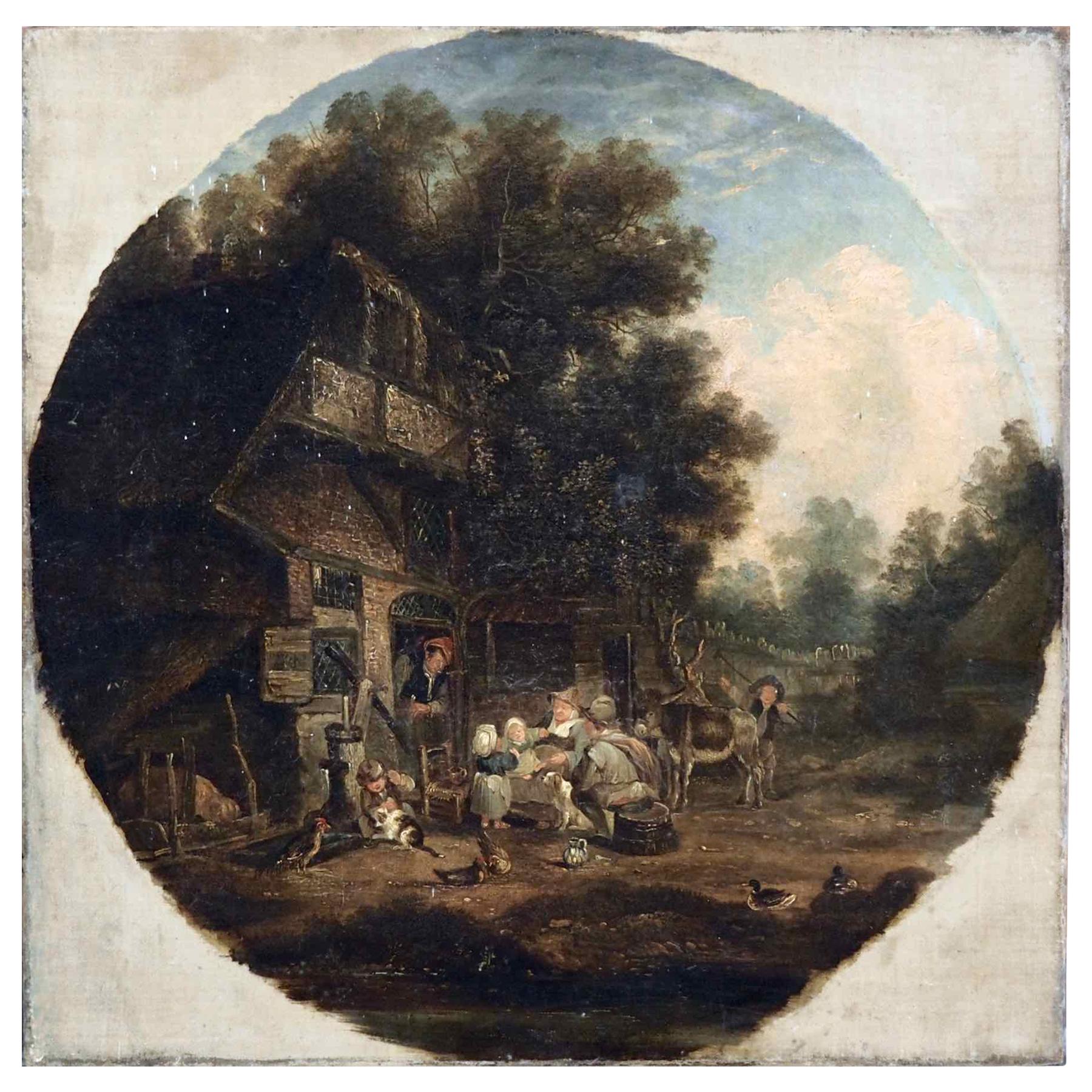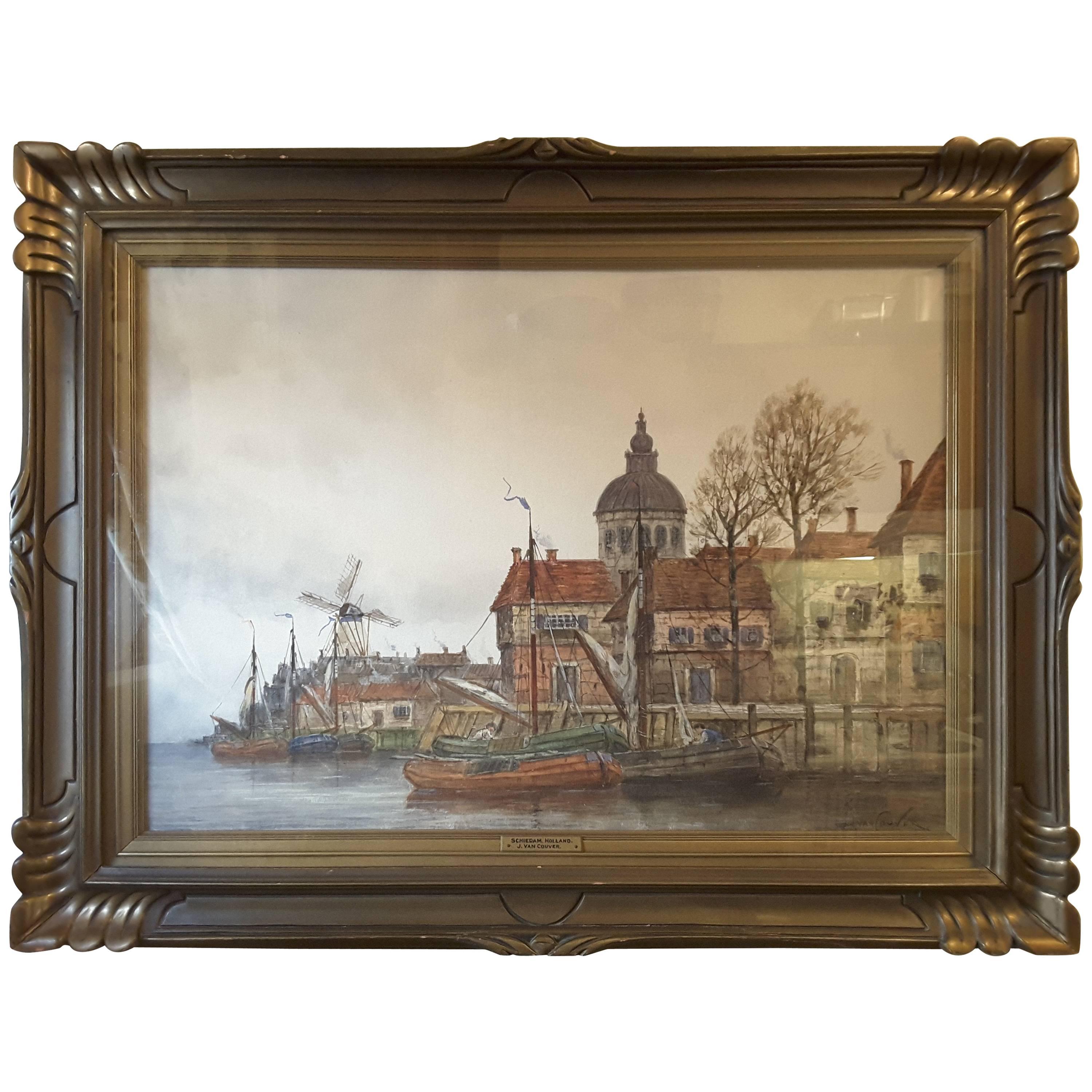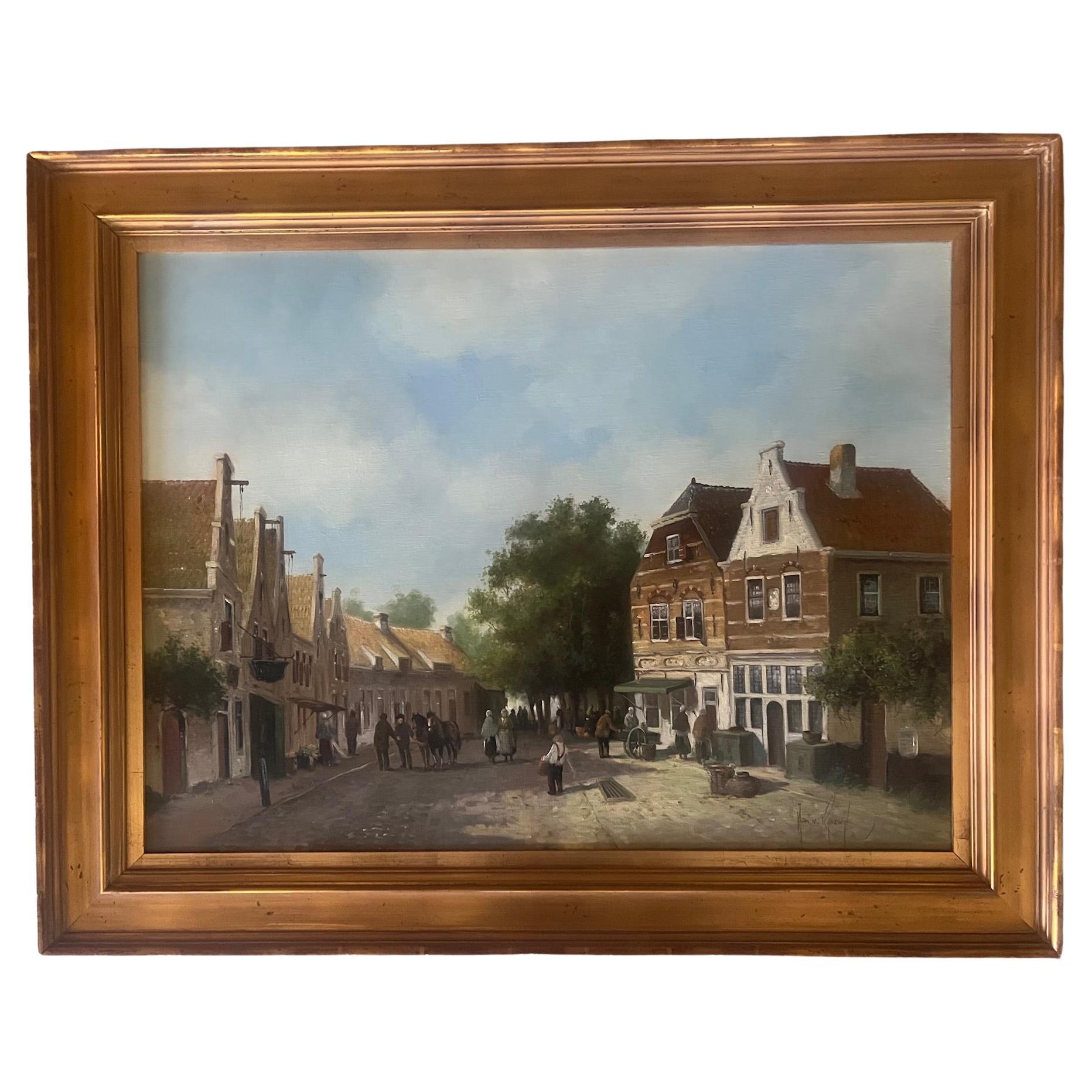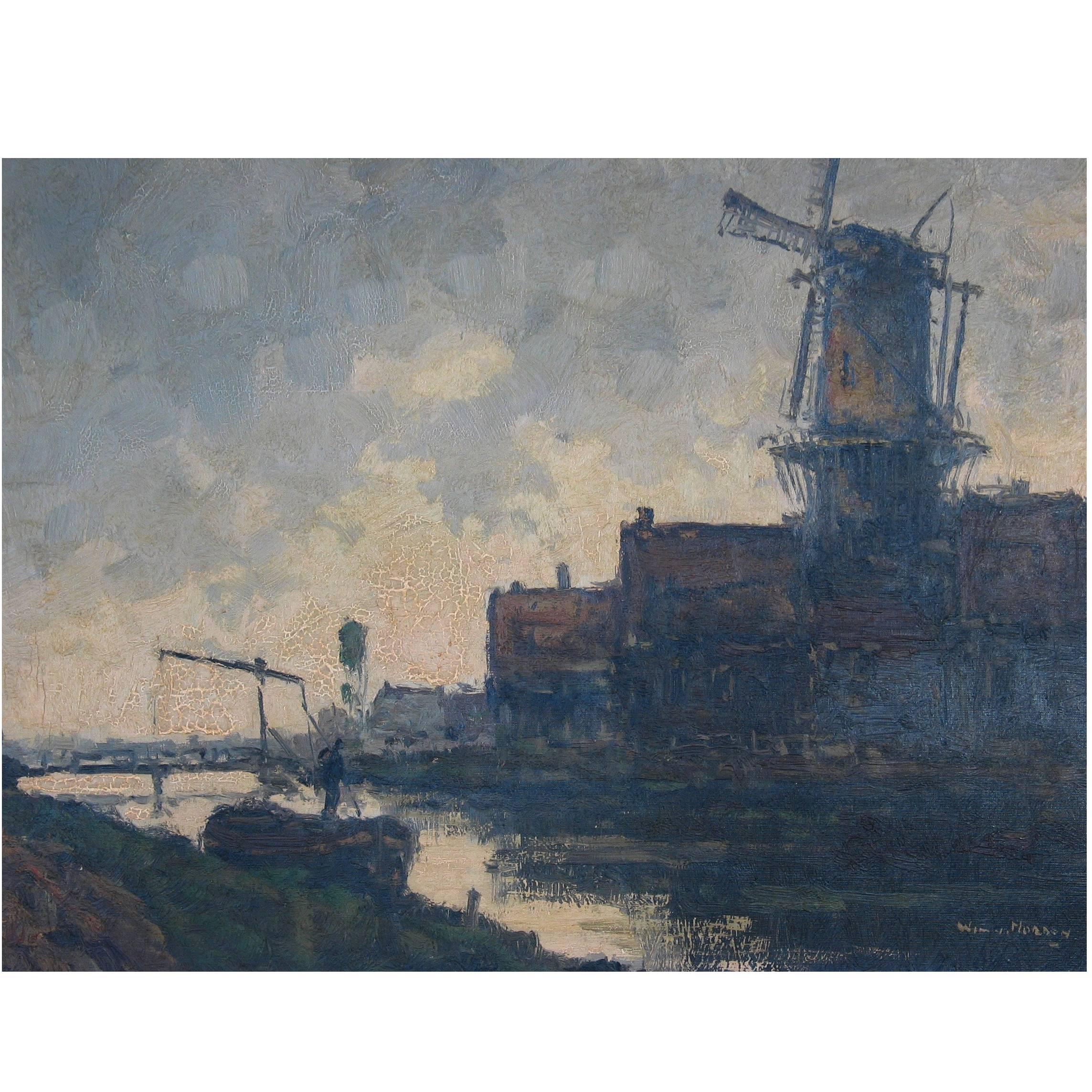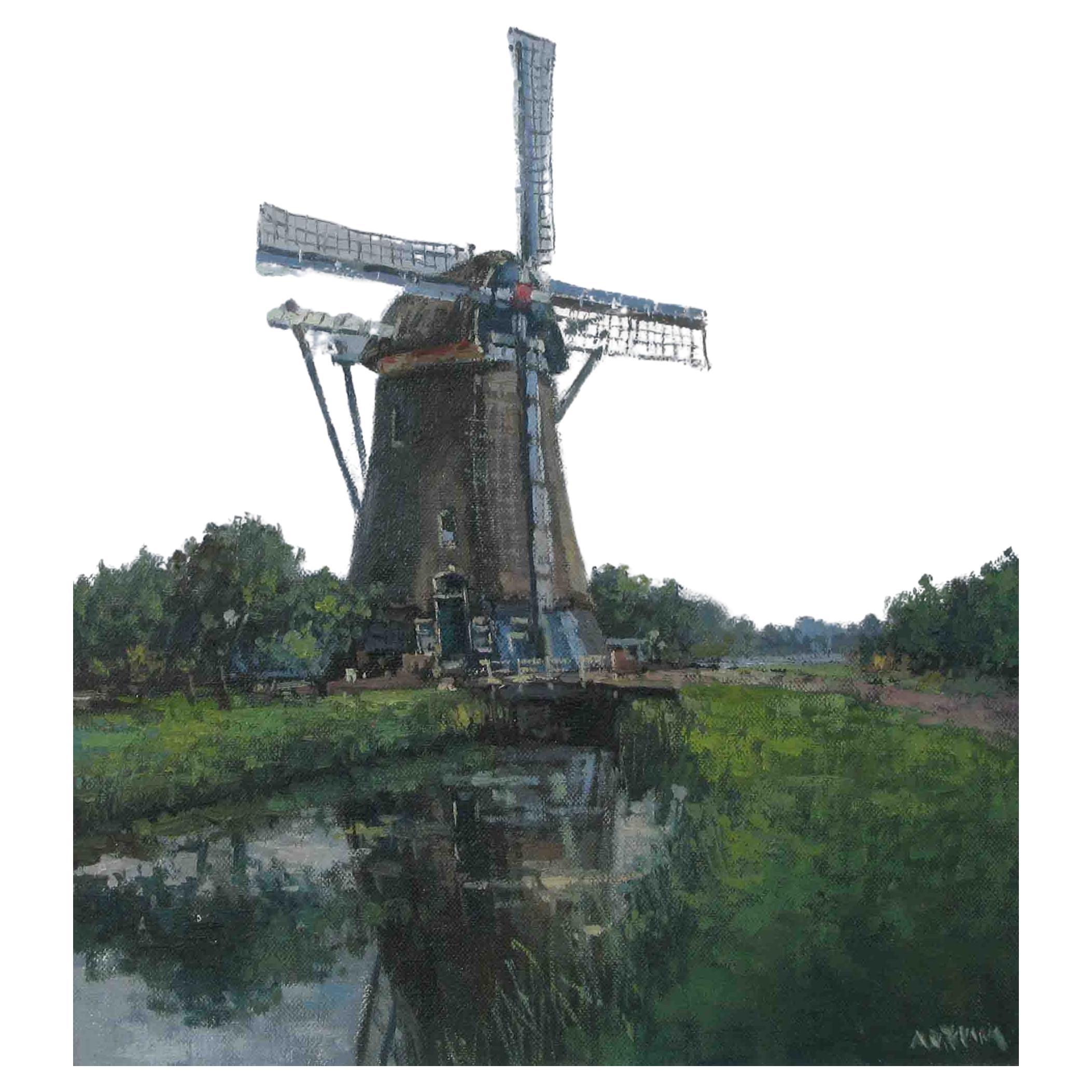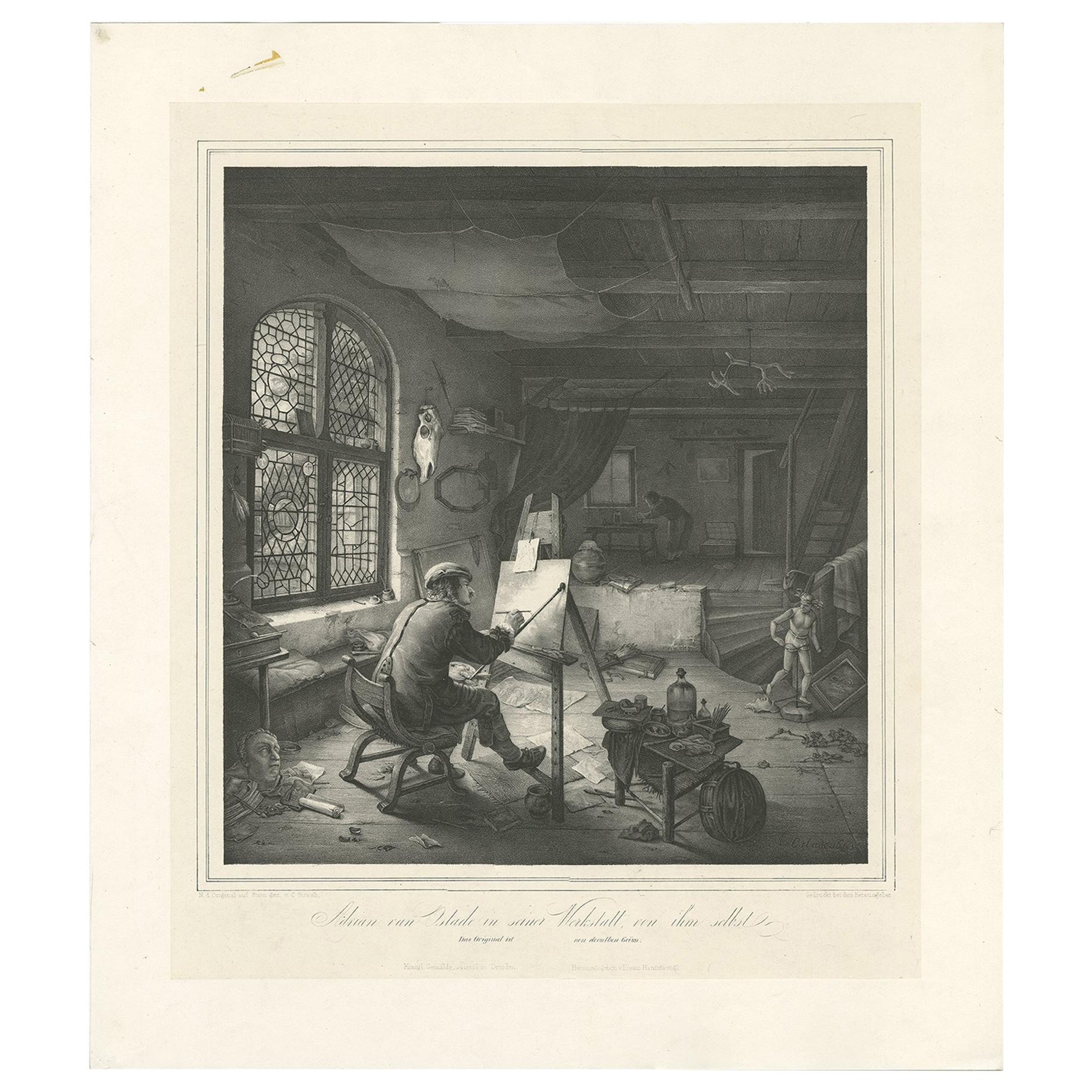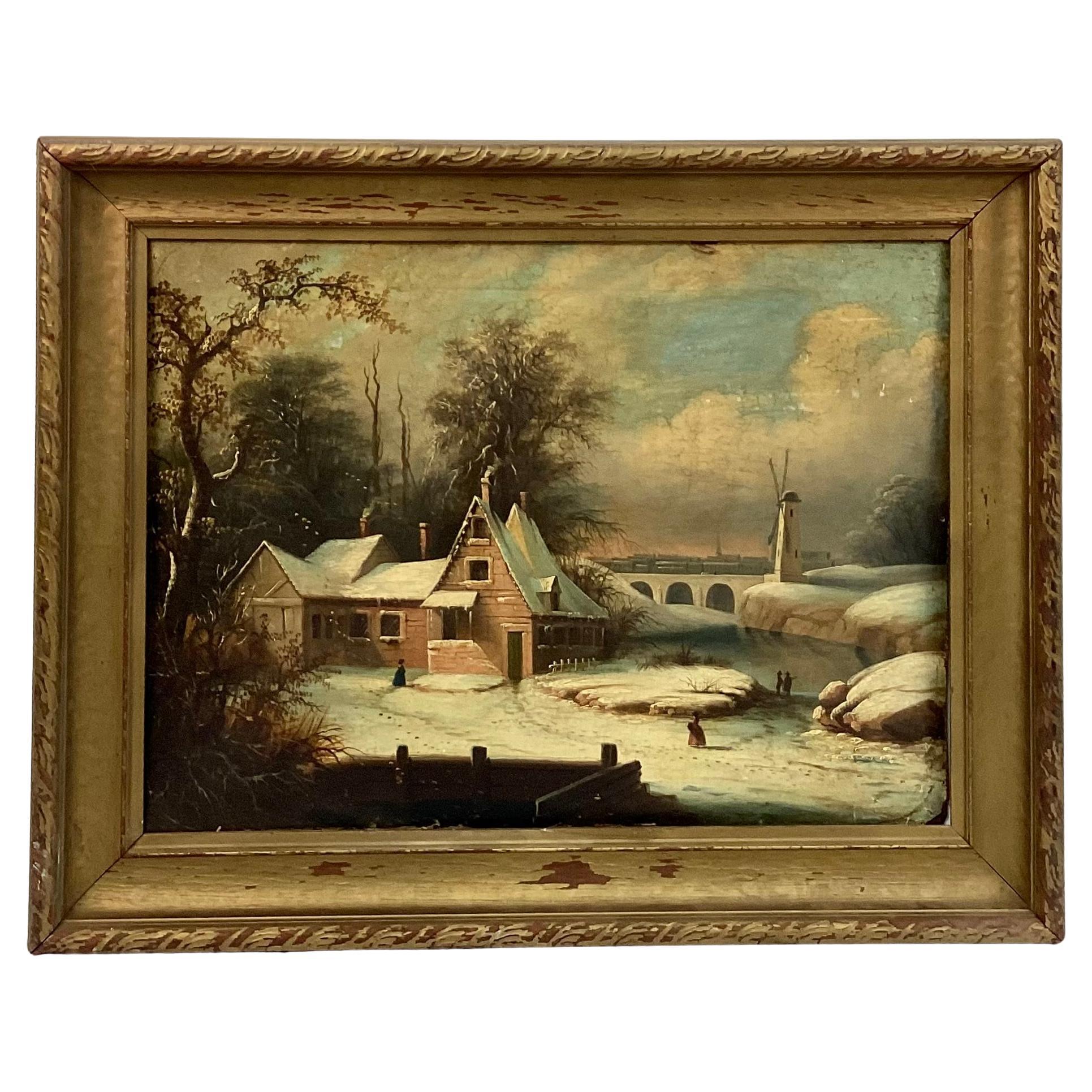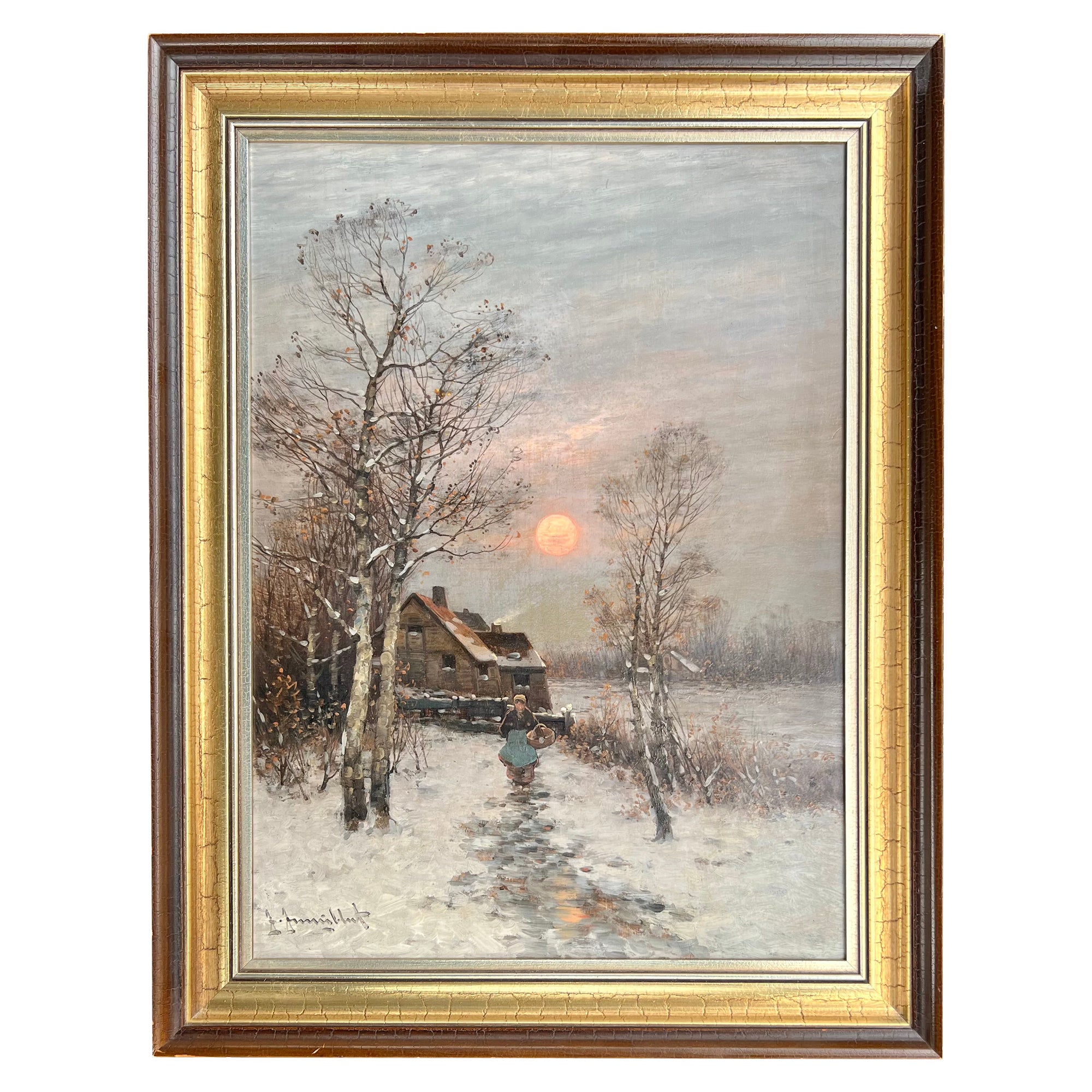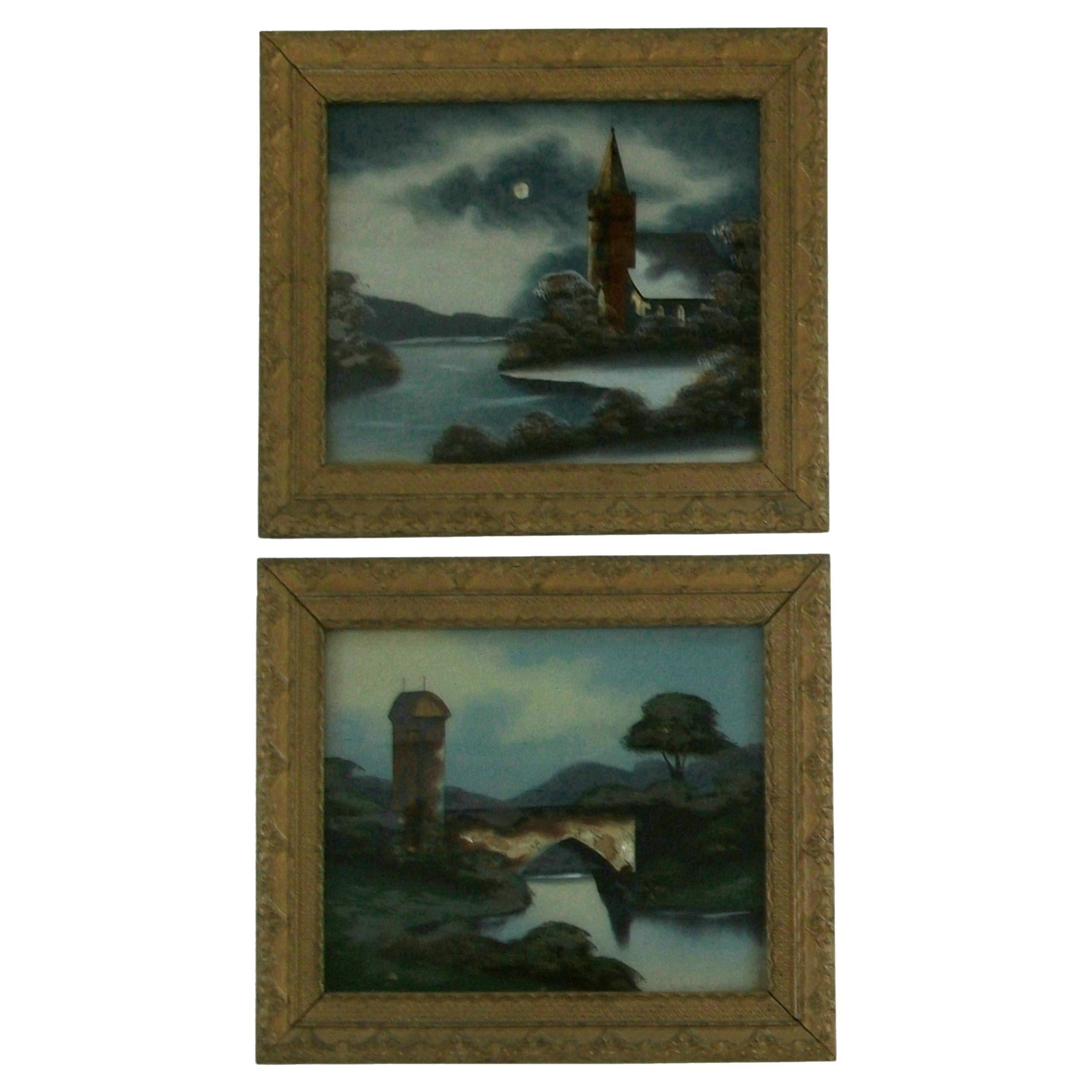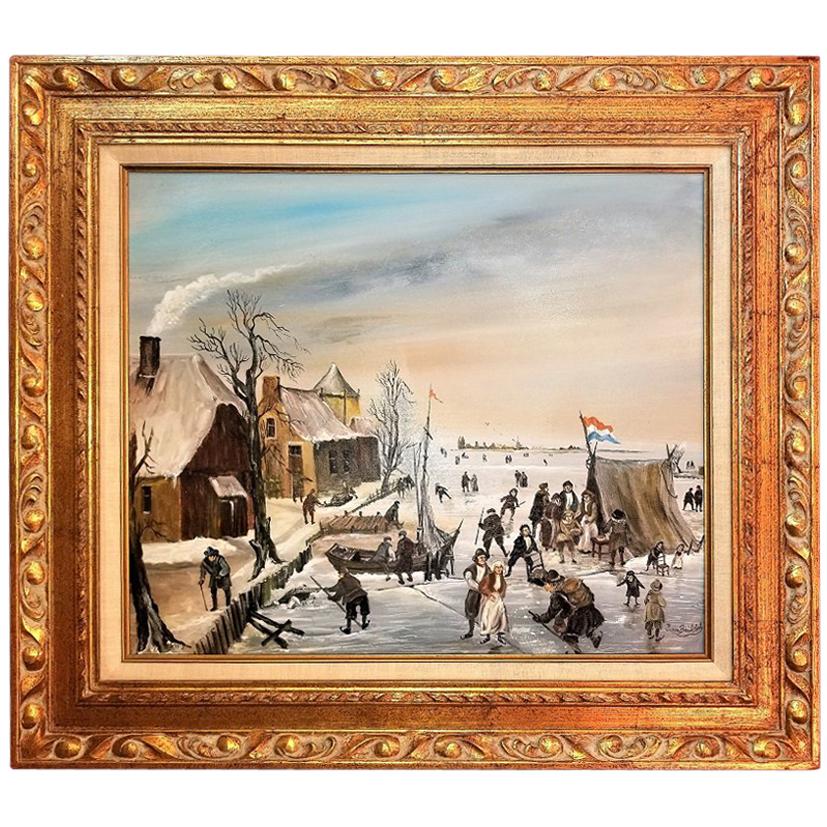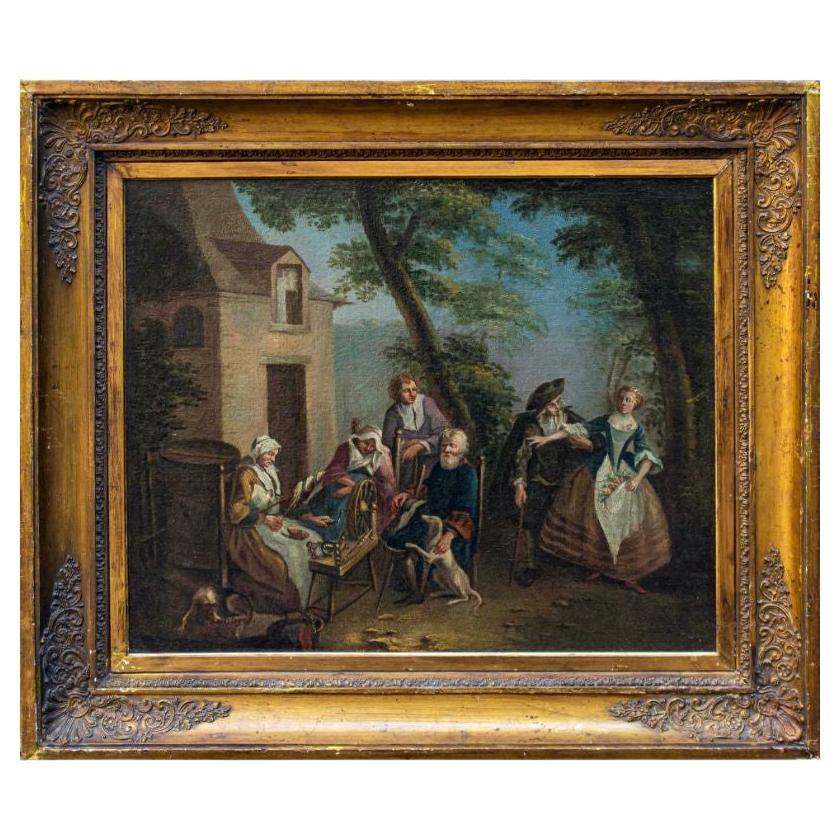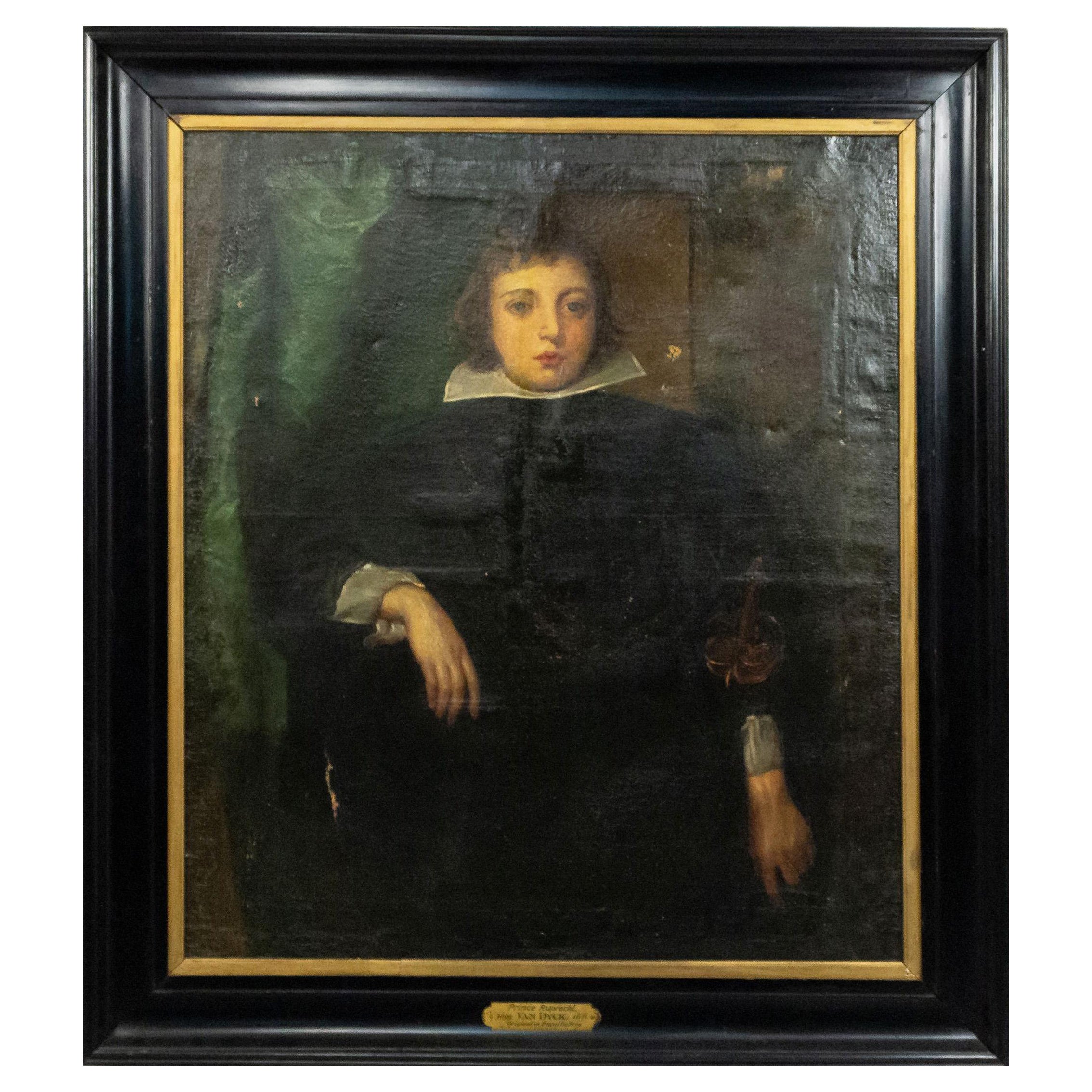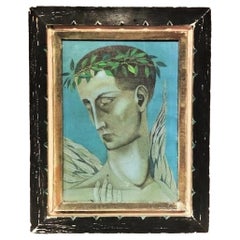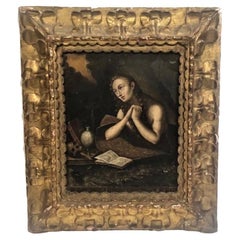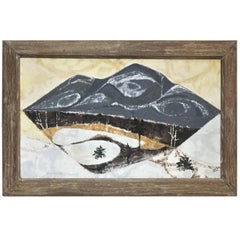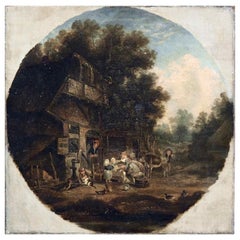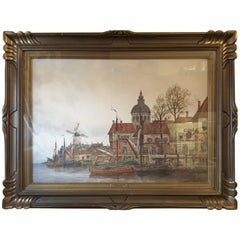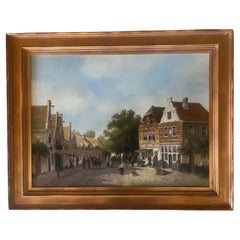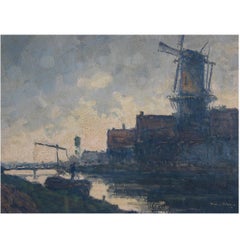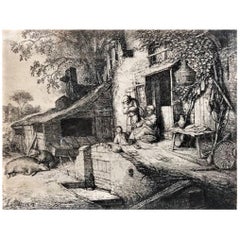
Adriaen van Ostade, A Spinner, Dutch Etching, XVII Century
View Similar Items
Want more images or videos?
Request additional images or videos from the seller
1 of 10
Adriaen van Ostade, A Spinner, Dutch Etching, XVII Century
About the Item
- Creator:Adriaen van Ostade (Artist)
- Dimensions:Height: 14.75 in (37.47 cm)Width: 16 in (40.64 cm)Depth: 2 in (5.08 cm)
- Style:Dutch Colonial (Of the Period)
- Materials and Techniques:Paper,Etched
- Place of Origin:
- Period:
- Date of Manufacture:17th Century
- Condition:Wear consistent with age and use. Some water damage to passe-partout, image is intact. We make our best effort to provide a fair and descriptive condition report. Please examine photos attentively, as they are part of the description. Send us a message to request more details or disc.
- Seller Location:New York, NY
- Reference Number:1stDibs: LU2819323259592
About the Seller
5.0
Vetted Professional Seller
Every seller passes strict standards for authenticity and reliability
Established in 1993
1stDibs seller since 2017
80 sales on 1stDibs
Typical response time: 3 hours
Authenticity Guarantee
In the unlikely event there’s an issue with an item’s authenticity, contact us within 1 year for a full refund. DetailsMoney-Back Guarantee
If your item is not as described, is damaged in transit, or does not arrive, contact us within 7 days for a full refund. Details24-Hour Cancellation
You have a 24-hour grace period in which to reconsider your purchase, with no questions asked.Vetted Professional Sellers
Our world-class sellers must adhere to strict standards for service and quality, maintaining the integrity of our listings.Price-Match Guarantee
If you find that a seller listed the same item for a lower price elsewhere, we’ll match it.Trusted Global Delivery
Our best-in-class carrier network provides specialized shipping options worldwide, including custom delivery.More From This Seller
View AllRichard Wilt, Caesar, American Mid-Century Modern O/C Painting, Ca. 1960s
By Richard Wilt
Located in New York, NY
ABOUT ARTIST
Richard Wilt (American, 1915 - 1981) > Chronology and Exhibition History
1915 Born in Tyrone, PA
1981 Died in Ann Arbor, MI
EDUCATION:
1...
Category
Vintage 1960s American Mid-Century Modern Paintings
Materials
Canvas
Spanish Colonial, Penitent Mary Magdalene, Original O/C Painting, 18th Century
Located in New York, NY
Spanish Colonial
Penitent Mary Magdalene
Original oil on canvas painting
XIX century
Details
Original period frame.
Painting dimensi...
Category
Antique 18th Century Mexican Spanish Colonial Paintings
Materials
Canvas
Boris Solotareff, Portrait of Mr. Lautenberg, Oil on Canvas Painting, 1920s
By Boris Solotareff
Located in New York, NY
Signed en verso B. Solotareff, Lautenberg.
Original period frame, made personally by the artist.
Dimensions (without frame):
Height 16”
Width 12 ½”.
Dimensions (with frame...
Category
Vintage 1920s French Art Deco Paintings
Materials
Canvas
Sunshine, Original Upstate New York Landscape with Ashocan Reservoir
By Sunshine
Located in New York, NY
Sunshine was a known local artist in Woodstock and upstate New York area during 1960s. This abstract painting is of Ashocan Reservoir, located in Ulster County, New York. The reservo...
Category
Vintage 1960s American Mid-Century Modern Paintings
Materials
Acrylic
Rolph Scarlett, Modernist Abstract Composition, Guache on Paper, Ca. 1950’s
By Rolph Scarlett
Located in New York, NY
Artist: Rolph Scarletti (Canadian, 1889 – 1984)
Object: Modernist Abstract Composition
Period: Ca. 1950’s
Medium: Guache on paper, framed
Dimensions (unframed):
Height: 9-1/3”
Width: 12”
Dimensions (framed):
Height: 22-3/4””
Width: 25-3/4”
Rolph Scarlett (Canadian, 1889 – 1984) was a consummate explorer of twentieth-century abstract painting. Never afraid of trying new styles, curious and opinionated, constantly engaged with the world around him while steadfastly aware that he was on his own path and his alone, Scarlett more than once proved to be at the artistic zeitgeist of the eras in which he lived. Exposed very early on to the work of Paul Klee through a chance meeting in Europe with the artist himself, Scarlett took up abstraction with a fervor that never diminished during his long and impressive career. To create something that had never existed before: this was Scarlett’s great cause. And that is what is most obvious when you look at Scarlett’s work—you have never seen anything quite like it.
Scarlett was Canadian-born, came of age in the Midwest, and spent few important years in Hollywood, where he designed stage sets. His work from this early period echoes Klee’s use of color, his confidence in naïve, primitive forms, and his blend of abstraction and figuration. In its flat spatial qualities it prefigures the Indian Space painting of the 1940s by a decade. He moved to New York in 1933 and eventually found his first great patron at the Museum of Non-Objective Painting, directed by Baroness Hilla Rebay and art patron Solomon R. Guggenheim. Guggenheim would collect over 60 works by Scarlett for his collection, more than any other artist outside of Vasily Kandinsky and Rudolf Bauer.
As a frequent exhibitor and lecturer at the Museum of Non-Objective Painting (MNOP), Scarlett honed his sensitive feel for bodies in space and capitalized on his trademark use of bright, vivacious colors into accomplished, perfectly harmonized geometric works. However, Scarlett soon morphed these hard-edged forms into a nuanced expressionistic abstraction which, at its best, seems to be populated by dancing forms that animate the canvases. Along this way he was advised by Rudolf Bauer, the German expatriate and one of the originators of non-objective painting in the teens. Bauer had the idea for the Museum, and Rebay, his champion, had found in Solomon Guggenheim a patron for manifesting it. When Bauer emigrated just before World War II, he wanted to meet Scarlett. The two became friends, and Bauer advised Scarlett on his work over the course of many years. Even in a 1979 interview, Scarlett began to tear up as he recalled his first meeting with Bauer, a man whose work he "worshipped," describing that, "It was a touching moment for me, I’ll tell you."
Scarlett and Rebay also had a close, important relationship, one in which he bore the brunt of her sometimes condescending, if motherly, critiques and admonitions with tolerance and gratefulness. Eventually, though, he had to push back. In a letter from 1951 he writes, "I have noticed with growing amazement that during the past three years you have accepted less and less of my work—and, that same work, which you rejected has been accepted and shown in the best and largest shows all over this country."
This period—the late 1940s to the early 1950s—did in fact correspond to Scarlett’s most critical success, and to a return to the fanciful forms and characters of his pre-war work. At the same time, he found his own rhythm and complexity using a drip style similar to, though denser and more opaque than, the one made famous by Jackson Pollock, who had worked for many years at the MNOP and with whom he shared common influences. In 1949 he had a very well received solo show in 1949 at the Jacques Seligmann Gallery, reviewed very favorably in The New York Times: "The impression made by these paintings is one of originality and strength." He was also included in a juried show "American Painting Today" at the Metropolitan Museum of Art in 1950 and in the Whitney Annual of 1951. The curator for the Whitney show in fact bypassed a selection of Scarlett’s careful geometrics in favor of a new "lyrical" drip painting—one which he describes as having had "a helluva good time" making.
Rebay articulated her loss of control over Scarlett very keenly in one of her last official letters to him: "So your way ended in the horrid jungle it is in now; even a Mr. Pollock’s smearage was not bad enough for you to have a try at; and betraying yourself, you betrayed art and my faith in you, and my present disgrace by my failure to foresee such an outrageous possibility—since you even paint objectively now."
Yet, despite the fact that he was moving in his own direction when the change in leadership took place at the Museum of Non-Objective Painting and Rebay was forced out as director, Scarlett was hit hard. He understood this change rightly as a betrayal by the establishment. Scarlett was a unique individual and soul, and was affected personally and philosophically by the idea that the movement with which Scarlett had aligned his talents seemed to disappear overnight, and his life’s work rendered valueless.
Without the Museum’s support, Scarlett decided eventually to move to the artists’ community of Shady, New York, just outside of Woodstock. He had occasional shows throughout the years, but mostly settled down to regional obscurity. He began making jewelry, which had been his first trade, and it was following a show of his jewelry in 1975 at the Jaro Gallery, that he was rediscovered by Samuel Esses, and his wife Sandy.
Samuel Esses was a successful businessman and an avid collector. He always sought out that which was unusual and, like Scarlett, was ahead of his time in many ways. For example, in 1979, Sam became enthralled with the early graffiti appearing on the New York subway trains. With the sole goal of preserving these groundbreaking yet short lived works of art he was inspired to create "The Esses Studio," a painting warehouse and workshop for graffiti artists to work in a studio, collaborate, and paint on canvas. The biggest names of graffiti writing participated—Futura, Crash, Dondi, Zephyr, and Daze to name a few. The project was well received and provided critical validation at an important time for this alternative form of abstraction to be recognized by the established art world. The success of the "Esses Studio" helped fuel an alternative fire that would propel gallerists and curators to acknowledge other street artists and provide a foundation of acceptance for the early careers of Keith Haring and Jean-Michel Basquiat. It is not a stretch to say that what Esses saw in the graffiti art of the 1970s was very similar to what he saw in 1950s-era Scarletts—something raw, honest, and melding many twentieth century influences into one unique form. Inspired by the importance of the collection and the passion of the collector, Weinstein Gallery...
Category
Vintage 1950s Canadian Mid-Century Modern Paintings
Materials
Paper
Ivan Olinsky, Still Life w/ Chinese Porcelain Figurine & Fruits, O/C Painting, C
By Ivan Grigorievich Olinsky
Located in New York, NY
Artist: Ivan Grigorewitch Olinsky (Russian-American, 1878 1962)
Subject: Still life w/ Chinese porcelain figurine & fruits
Period: 1920’s...
Category
Vintage 1920s American Expressionist Paintings
Materials
Canvas
You May Also Like
Dutch Painting, After Adrian Ostade
Located in Aalsgaarde, DK
Dutch painting, after Adrian Ostade (1610-1685). Proveniens: private family collection from Stockholm, Sweden.
Measures: H. 51 W. 51 cm
H. 20 W. 20 i...
Category
Antique 17th Century Dutch Paintings
Materials
Canvas, Paint
J. Van Couver, Watercolor, Dutch Harbor Scene
By Jan Van Couver (Hermanus Koekkoek Jr.)
Located in Ottawa, Ontario
Jan Van Couver, (Hermanus Koekkoek, Jr.)--(1836-1909), watercolor, Dutch harbor scene, A very nice painting of the town, windmill, trees and boats with a ...
Category
Antique Late 19th Century Dutch Dutch Colonial Paintings
Materials
Watercolor
Dutch Village Street Scene by Jan van Rijsewijk
By Jan van Rijsewijk
Located in Ross, CA
Oil painting on canvas painted by Jan van Rijsewijk (Dutch, 1928-1987). The painting is a Dutch village street and signed by Rijsewijk lower right.
Nicely framed in gold painted woo...
Category
Vintage 1950s Dutch Dutch Colonial Paintings
Materials
Paint
$1,250 / item
Wim Van Norden, Dutch Landscape with Canal and Windmill
By Wim van Norden
Located in Ottawa, Ontario
Wim van Norden (Dutch artist 1917-2001) Dutch Landscape with canal and windmill, signed Wim V. Norden, (signed lower right), oil on canvas measuring 23" inches high x 31" inches wide...
Category
Mid-20th Century Dutch Dutch Colonial Paintings
Materials
Canvas
Anton Van Unen Oil on Canvas 'Dutch 1918-2010'
Located in Ottawa, Ontario
ANTON VAN UNEN PAINTING (DUTCH 1918-2010)
Windmill in a Reedland.
Signed Lower Right.
Oil on canvas.
15 3/4" x 11 3/4" in., (40 x 30 cm.)
Framed.
Category
Mid-20th Century Dutch Dutch Colonial Paintings
Materials
Canvas, Paint
Antique Print of the Painter Adriaen van Ostade in His Workshop 'circa 1840'
Located in Langweer, NL
Antique print titled 'Adrian van Ostade in seiner Werkstatt von ihm selbst'. Lithograph, on chine collé, of the Dutch Golden Age painter Adriaen van ...
Category
Antique Mid-19th Century Prints
Materials
Paper
$279 Sale Price
20% Off
